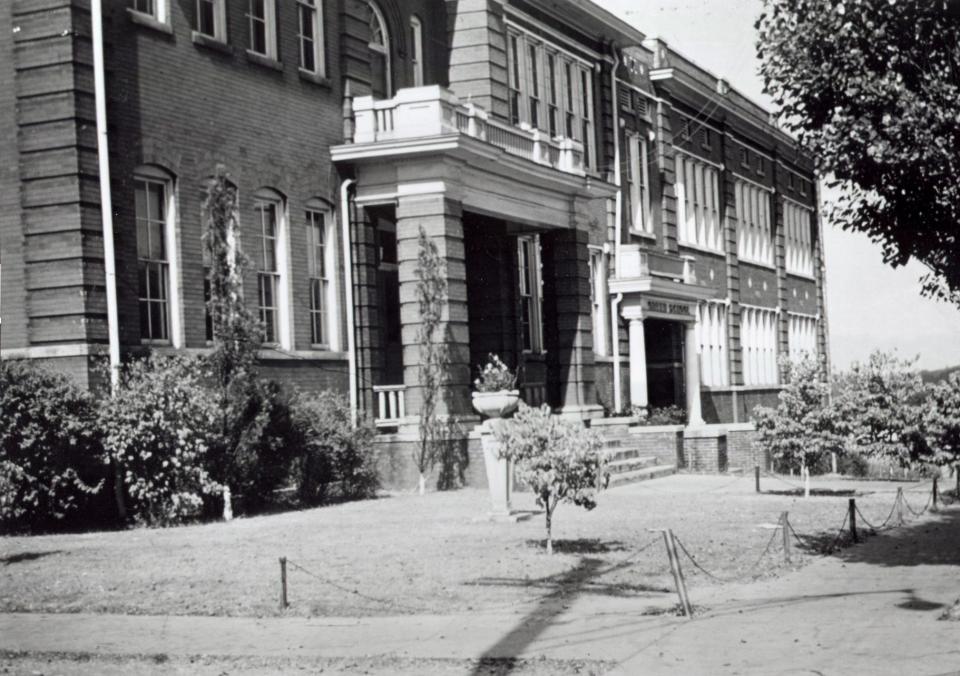Green School was named for physician, one of the wealthiest Black Knoxvillians in 1909
- Oops!Something went wrong.Please try again later.
For more than 39 years Dr. Henry Morgan Green was a leader in community activities, traveled the world and had a very lucrative medical practice. He served as president of the National Medical Association and was founding president of the National Hospital Association. His name was usually at the forefront of civic affairs until his death in 1939.
Born in Adairsville, Georgia, on Aug. 28, 1873, he came to Knoxville College and graduated from the Normal Department in 1895. He began teaching in one of the KC feeder schools that year but came back to the college a few months later when it opened its medical school. Green enrolled there and later finished his medical training at Northwestern University.

He graduated in 1900 and returned to Knoxville and helped to organize the Knoxville Medical College on College Street where Rogers Memorial Baptist Church is today. That school trained twenty-one Black physicians before it closed in 1910.
On Jan. 21, 1908, when he won his City Council seat for the first time, he declared himself independent and said he would not affiliate with any party or group. The Knoxville Journal described him as a "self-made man. Today he is one of the most influential representatives of the negro race in this city and at the same time is one of its wealthiest members and commands as high respect as any negro in the city. He also stands high in his profession."
In 1909 Green School was erected and named for him. Green in 1911 served as president of the Black division of the Exposition at Chilhowee Park. For the occasion that Sept. 24 he introduced the Register of the U.S. Treasury J.C. Napier. A large parade of participants had started at the corner of Gay and Main and proceeded to the Negro Building at the park.
Hear more Tennessee voices: Get the weekly opinion newsletter for insightful and thought-provoking columns.
The News Sentinel of March 10, 1912, heralded Green's return to the city from his trip abroad. It said: "Dr. H.M. Green, one of the best known colored physicians and surgeons in the south, returned Friday night from several months' visit abroad. He was tendered a reception and banquet by colored businessmen of the city. While abroad, he studied his profession in hospitals in Paris, London, Berlin, and Vienna."
Green had first come to Knoxville as a student with the goal of becoming a teacher. At KC he was a member of the Glee Club, which traveled to several cities and raised funds to build McCulloch Hall, the men's dormitory. Another member of that group was Dr. Otis Sims, who also practiced medicine here. He was the grandfather of Henri Sims Spriggs. A third member of the Glee Club was the Rev. John T. Arter, who helped set up the public school system in Alcoa.
He was the father of longtime Austin High School English teacher Edna Arter and Ruth Arter Matthews, who taught in Blount County.
In 1922 Dr. Green was elected president of the National Medical Association and became the founding president of the National Hospital Association in 1923. In that position he helped organize the National Association of Insurance Examiners, which aided the development of Black life insurance companies across the country.
For 17 years he also served as a city physician and was instrumental in addressing the poor health conditions of local citizens. He became an international expert on the disease pellagra and wrote a book on its causes and treatment. He was internationally honored for his discoveries. He died March 19, 1939, and is buried in the Knoxville College Cemetery.
Robert J. Booker is a freelance writer and former executive director of the Beck Cultural Exchange Center. He may be reached at 865-546-1576.
This article originally appeared on Knoxville News Sentinel: Green School was named for one of the city's richest Black men in 1909

